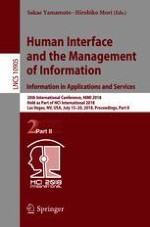2018 | OriginalPaper | Buchkapitel
Credit Risk Analysis of Auto Loan in Latin America
verfasst von : Yukiya Suzuki
Erschienen in: Human Interface and the Management of Information. Information in Applications and Services
Aktivieren Sie unsere intelligente Suche, um passende Fachinhalte oder Patente zu finden.
Wählen Sie Textabschnitte aus um mit Künstlicher Intelligenz passenden Patente zu finden. powered by
Markieren Sie Textabschnitte, um KI-gestützt weitere passende Inhalte zu finden. powered by
